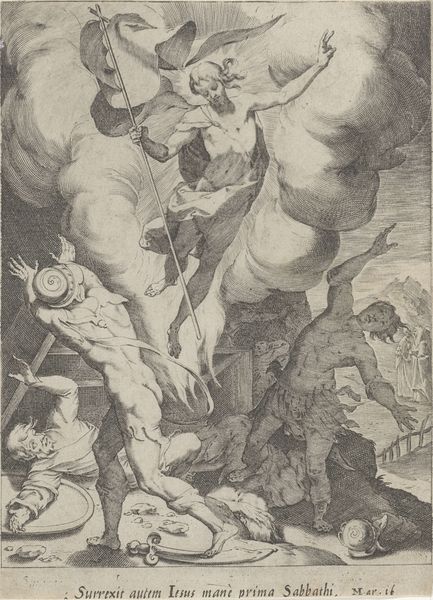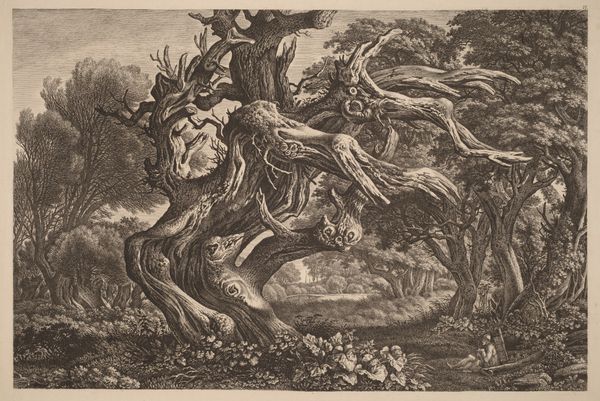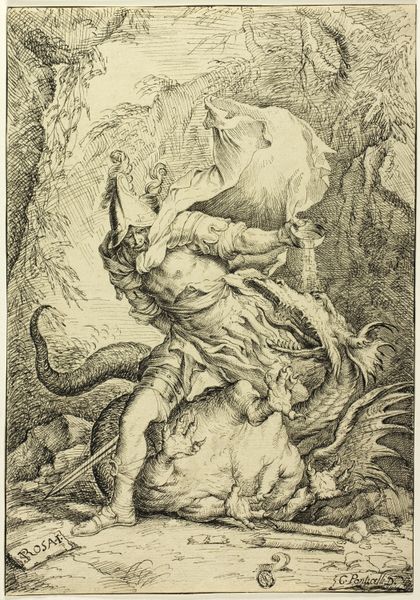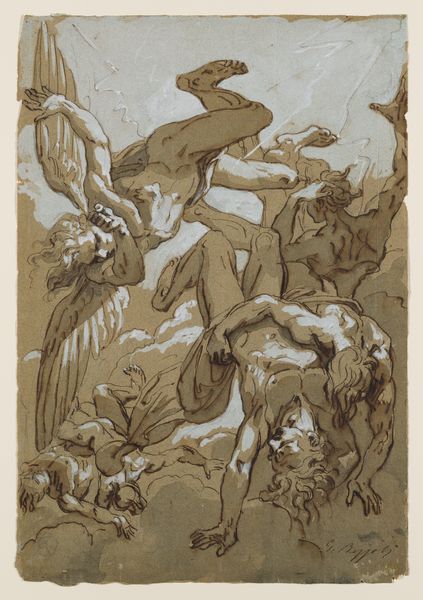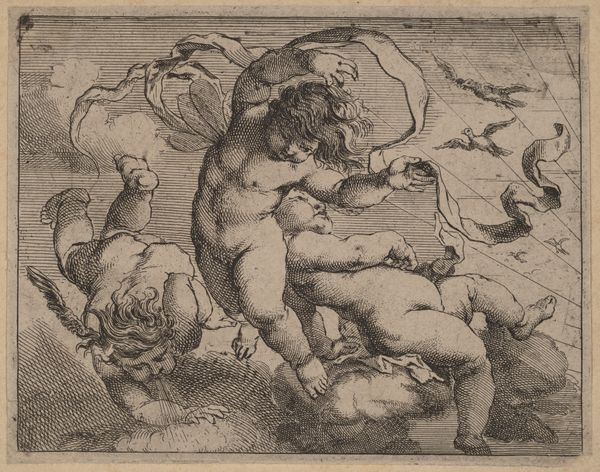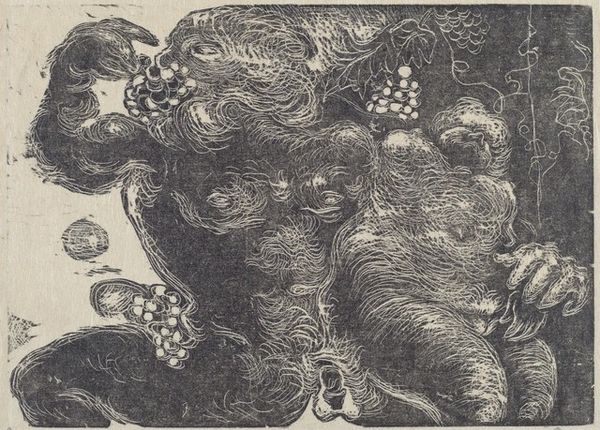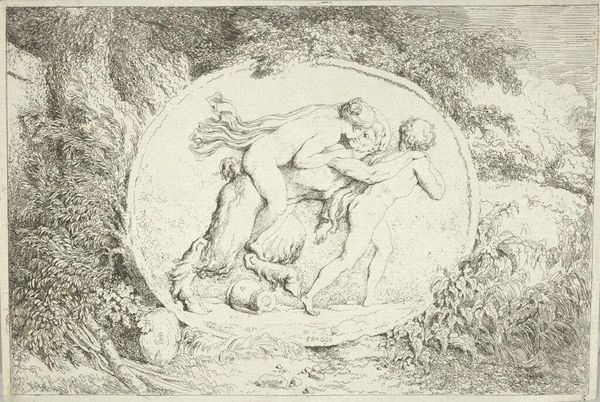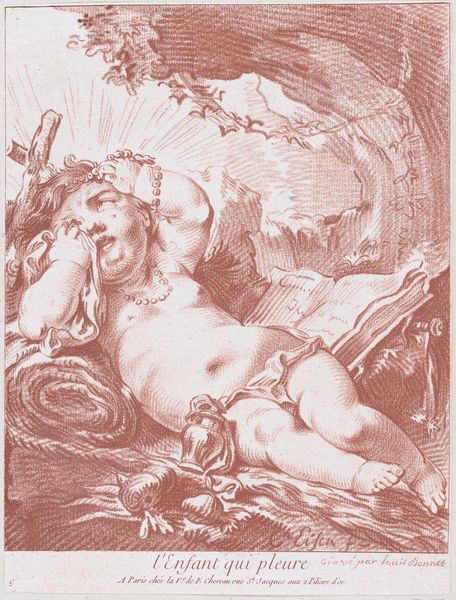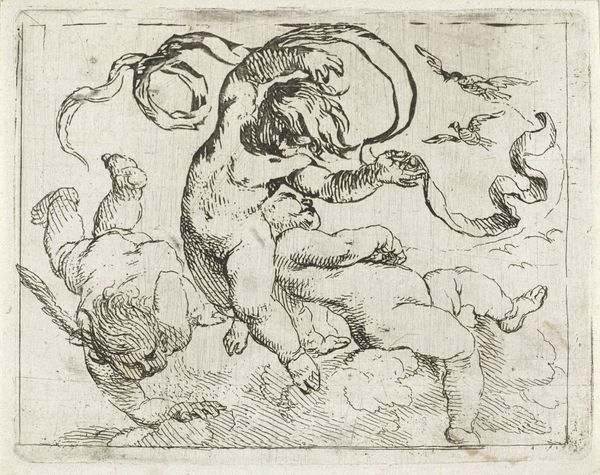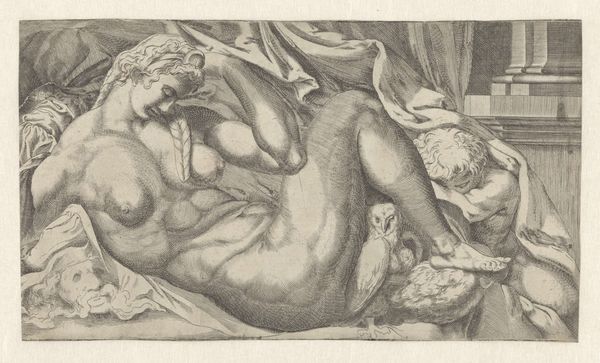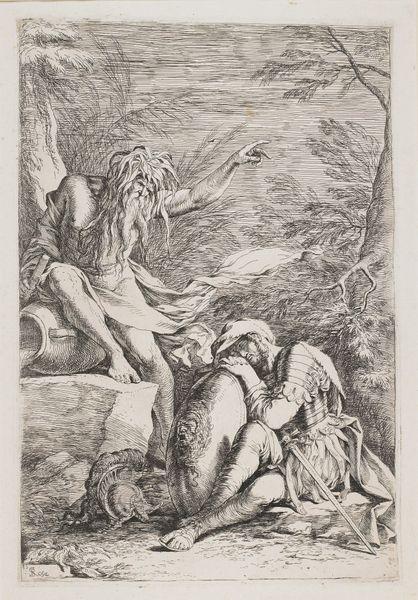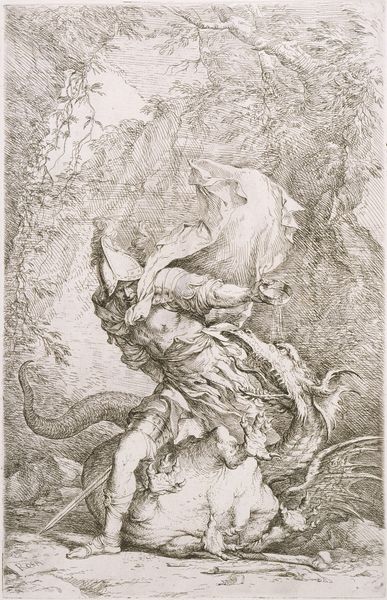
drawing, pencil
#
drawing
#
pen sketch
#
pencil sketch
#
landscape
#
figuration
#
sketch
#
romanticism
#
pen-ink sketch
#
pencil
#
nude
Dimensions: 27.1 x 20.8 cm
Copyright: Public domain
Editor: Here we have Orest Kiprensky's "Faun with a Pipe," a pencil drawing from 1820. I'm immediately struck by the powerful, almost defiant pose of the faun, especially considering it's 'just' a sketch. What's your read on this piece? Curator: It's tempting to view it through the lens of Romanticism. There was a fascination with classical mythology and the nude form as signifiers of natural, pre-social states. Kiprensky, influenced by the political turbulence and evolving societal norms of his time, potentially used the faun—a creature existing outside of structured society—as a subtle commentary. Where do you see societal norms reflected or subverted here? Editor: I suppose the emphasis on raw physicality feels like a deliberate move away from the more idealized and restrained depictions of the body we might see in Neoclassical art. Almost a rejection of those traditions. Curator: Precisely! And think about the role of the institution exhibiting this work. Does a museum’s display of a nude form automatically imbue it with a sense of cultural legitimacy, or does it also retain a sense of otherness? Editor: It's a complex relationship. Showing it validates it, but perhaps also sanitizes some of the inherent wildness? Curator: A perceptive observation! Kiprensky might have been exploring the boundaries of acceptable imagery and the public's relationship with art and ideas around nature itself. Editor: I see it differently now – the drawing not just as an exercise in form, but as a loaded cultural statement. Curator: Exactly. By examining the social forces at play, we begin to understand the deeper meanings encoded in the faun’s rough form. A great reminder that art is never created in a vacuum!
Comments
No comments
Be the first to comment and join the conversation on the ultimate creative platform.
